Monday February 6, 2023
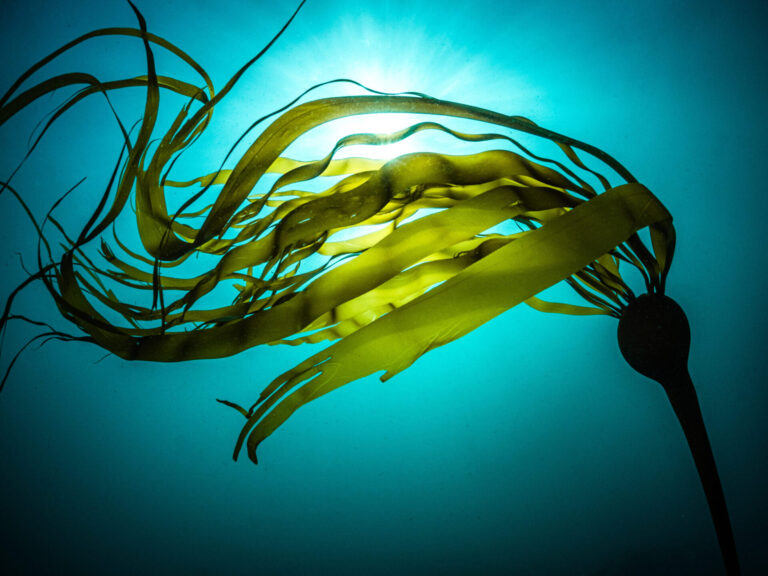
The dense, golden kelp forests growing beneath the waves along the Pacific Coast are as gorgeous as any terrestrial forest. These beds of swaying algae are cherished by many, including scuba divers, artists, and beachgoing children alike. But beyond their aesthetic attributes, these bountiful forests also perform a critical ecosystem function, serving as a foundational species that provides a home to thousands of species of fish, invertebrates, and mammals. However, starting in 2014, scientists detected a decline in annual kelp forest cover up and down the California coast. By 2019, an estimated 95 percent of the northern kelp forests had disappeared, causing profitable commercial fisheries for red abalone (Haliotis rufescens) and red sea urchin (Strongylocentrotus franciscanus) to dramatically decline. In recent years ecologists and biologists, alongside state officials, non-profit kelp experts, and passionate commercial and recreational divers, have been working around the clock to try and restore the northern California canopy forming kelp species, bull kelp (Nereocystis luetkeana), but the effort has faced a variety of challenges. In August 2022, FISHBIO and a project partner from Monterey Bay Seaweeds joined the battle to save the kelp forests, proposing to test a novel restoration technique that may be used as a complementary tool to bolster kelp forest recovery.
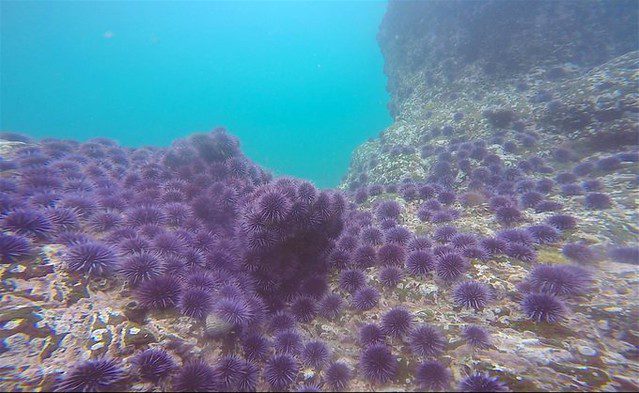
Kelp restoration is no easy task. This is especially true in northern California due to the dynamic, high wave action coast, the presence of an insatiable grazer, and the unique life history of the bull kelp species. In 2013, a devastating disease known as seastar wasting syndrome, wiped out many seastar populations, including the sea-urchin-devouring sunflower star (Pycnopodia helianthoides). One year later, the ocean along the Pacific Coast experienced unusually warm temperatures for a prolonged period of time, creating non-ideal conditions for bull kelp forests. This “perfect storm” was a one-two punch to bull kelp, putting it at a severe disadvantage that caused a shift from healthy forests to urchin barrens over the course of just a few years. These barrens, characterized by bare rocky bottoms and ravenous hordes of purple sea urchins (Strongylocentrotus purpuratus), are now common. The hungry urchins are quick to devour any new bull kelp that starts to grow, preventing kelp forests from recovering.
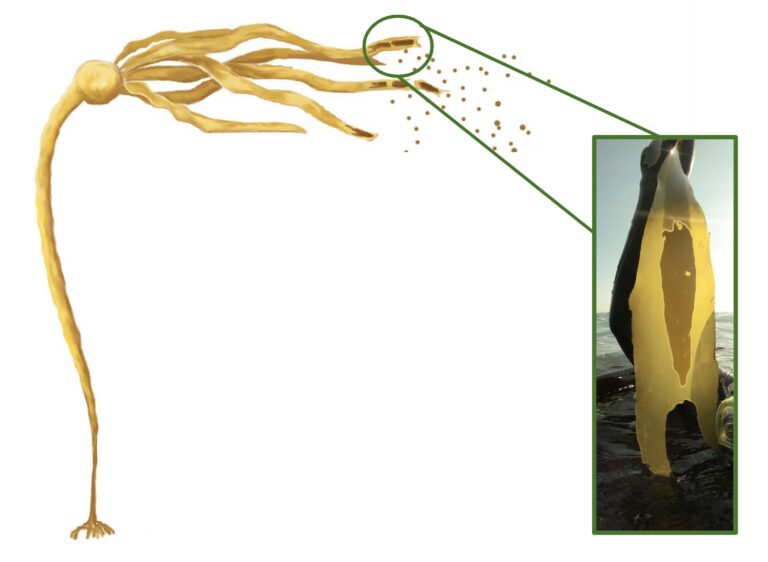
The bull kelp life history also creates challenges for restoration. As an annual kelp, it completes its entire life cycle within one year. This life history aligns with seasonal variability, with growth occurring in the early spring through summer, and spore production and dispersal taking place in the fall. Much like a fern, bull kelp produces reproductive spores that are packed by the millions into specialized tissues called sori, releasing and dispersing the spores when they are mature. Bull kelp completes its life cycle when its long, flowing strands are ripped from the seafloor and deposited on the beach by large winter storms. Although this live-fast-die-young life history allows the bull kelp to persist in extreme environments, its annual life cycle poses many challenges for restoration. Most successful techniques applied to kelp in California to date have focused on species that either reproduce year-round or are in low wave action regions.
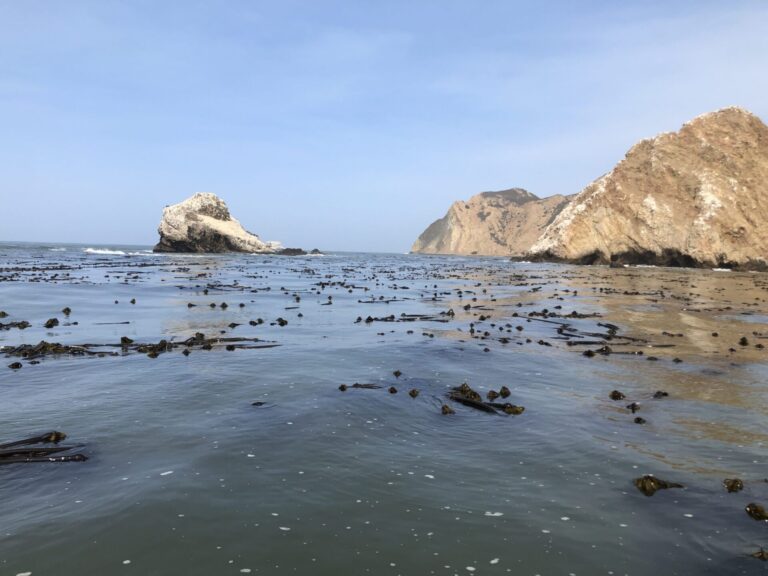
Kelp restoration techniques that are currently being tested include urchin removals, spore bags, seeded lines, and seeded gravel. Divers have worked tirelessly to remove purple urchins, eliminating over 50,000 lbs from 2019 to 2021, reducing the density of urchins in hopes that the kelp would come back on its own. Spore bags (mesh bags with spore-dense material collected from a nearby healthy bull kelp bed) and seeded lines (spore-seeded rope bolted to the seafloor) have also been tested alongside urchin removals. There have also been experiments with Green Gravel, or gravel seeded with kelp spores. However, regardless of the technique, researchers have found that kelp restoration methods are generally costly and limited to restoring small regions at a time.
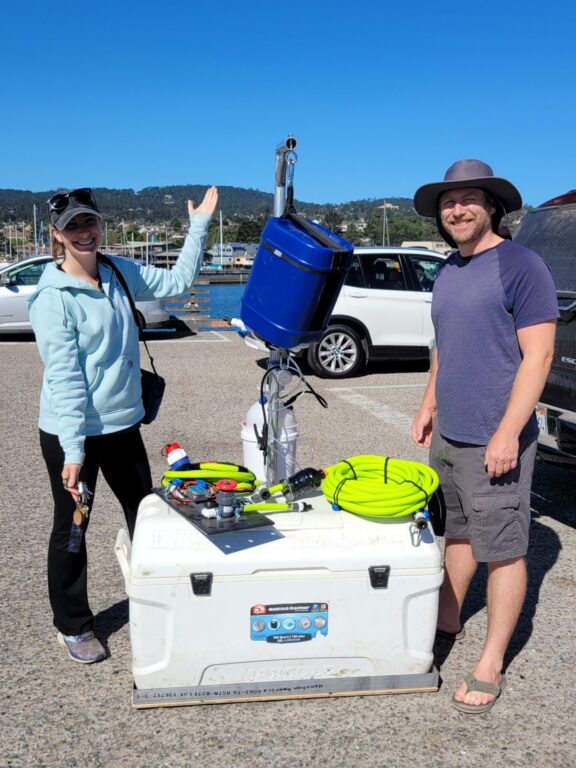
FISHBIO’s kelp restoration project, funded by Pacific States Marine Fisheries Commission, aims to test a technique that reduces overall costs, removes the need for physical substrates for kelp spores (like mesh bags, rope, or gravel), and may restore large swaths of kelp forests in a single deployment. The approach is meant to be a spore dispersal enhancement, providing a “helping hand” to the few natural populations of bull kelp still present in northern California. The methodology is based on three simple steps: 1) collect a small amount of spore-rich material from a local bull kelp population, 2) encourage spores to release into a container of seawater, and 3) deploy the concentrated solution of spores to the restoration site. This third step is made easy by FISHBIO’s fabricated “Reef Duster,” a system that deposits the spore solution directly to the ocean floor. Restoration areas targeted during the experiments include regions where bull kelp forests historically flourished. FISHBIO conducted the first spore dispersal trial in September 2022, and expects to see preliminary results in June 2023. Small-scale experiments will also be conducted in spring 2023. Stay tuned to find out if this novel technique is successful, and how it may become a tool in the restoration toolbox used to solve the northern California kelp conundrum.
If you would like to visualize kelp canopy loss in California over time, check out The Nature Conservancy’s interactive map at kelpwatch.org.
This post was featured in our weekly e-newsletter, the Fish Report. You can subscribe to the Fish Report here.
